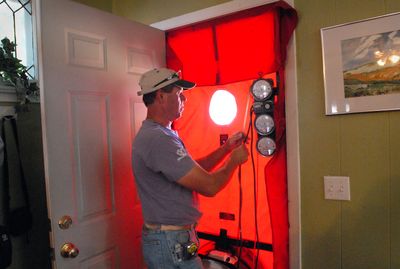Winter advisory: Heat cost will soar
Plan to pay more for gas, oil, electric

The first snowfall is months away, but it’s already putting a chill on winter budgets.
Virtually every source of household warmth is expected to get more expensive this year. The region’s main utility, Avista, wants to increase rates for electricity and natural gas in Washington and Idaho – the figures aren’t final, but customers could be paying in the neighborhood of 20 percent more this winter, if increases in rates and surcharges are approved.
The cost of heating oil is expected to rise by about a third following several years of steep increases. And interest in wood stoves and wood-pellet stoves is exploding, as people look for alternative ways to heat their homes.
“We’ve never seen an interest this great in July and August,” said Jason Freeman, of Kuma Stoves in Hayden, which makes wood stoves. “For the first time, we’re wondering whether we’ll be able to keep up in the fall.”
Agencies that help the poor with heating bills are worried because their funding isn’t keeping pace with rising costs. The more expensive energy is, the fewer people get help.
“I can tell you right now we feel very challenged in terms of what’s going to happen,” said Ron Hardin, spokesman for Spokane Neighborhood Action Programs, which provides heating assistance to the needy. “It doesn’t take a rocket scientist to realize that costs are skyrocketing.”
For many, the winter increases may feel like the economy’s piling on. Since the start of the year gasoline prices have risen by a buck a gallon. Food prices continue rising, helping to push July’s overall inflation to a 17-year high. Though oil prices have dipped lately, economists still debate whether and when the country will enter a recession.
Elizabeth Heath, an attorney and tax preparer who lives in north Spokane, has been economizing. She’s rented out her basement and turned off the air conditioner this summer. She’s looking ahead to the winter and is wary of the cost of running her gas furnace.
“That really gets expensive,” she said. “So I’m trying to think of things to do.”
Ways to save
Avista and SNAP are encouraging people to take steps now to help offset heating costs. SNAP has been weatherizing homes for clients – doing everything from adding insulation to replacing inefficient windows and doors, Hardin said.
Avista promotes energy efficiency in a variety of ways – including at its Web site everylittlebit.com – and the utility offers a variety of incentives to make changes.
“We have rebates and incentives for every room in the house,” said Jessie Wuerst, Avista spokeswoman.
High prices are a double whammy for SNAP and its clients. Higher prices and a struggling economy mean more people may seek help – but the agency has been able to help fewer people in recent years.
SNAP provides heating help to Spokane’s needy families in a variety of forms, from grants to firewood to emergency assistance when people get a shut-off notice. In the last four years the average amount SNAP provides per household has risen 17 percent – from $433 to $505.
Meanwhile, the agency’s government funding hasn’t changed much, so the number of households served has dropped 11 percent – from 10,313 in 2004-05 to 9,198 last year.
Hardin said heating oil has been a particular challenge for SNAP, because the cost of filling a tank of several hundred gallons is often larger than the agency’s maximum grants.
“That’s been the most singularly expensive increase for us,” Hardin said.
Still to come
Avista, meanwhile, has asked Idaho and Washington regulators to grant rate increases for electric and natural gas customers. The utility is also seeking increased surcharges to cover its own unexpectedly high power costs.
It’s not clear what the total impact could be, since the surcharge requests haven’t been finalized except in the case of Idaho electric customers – who’d be looking at about an 18 percent increase on their bills if the rate change and surcharge are approved. A homeowner with a monthly heating bill of $150 last year would spend $162 more over six months.
Natural gas customers may face an even larger increase, though prices have dropped lately. The utility estimated earlier this year that it could seek a gas surcharge of 20 percent to 25 percent; it now says the surcharge request may fall below 20 percent.
Wuerst said the utility is being hit by the same price hikes as everyone else, and the increases are necessary for Avista to maintain its lines and stations, recover its power costs and pay for some relicensing.
“We are caught up in the increased prices of everything,” she said. “They’re impacting us just as much as the prices in the grocery store.”
Freeman, of Kuma Stoves, said many people are turning to wood as a way to save money on heating. It’s not that the price of wood isn’t up, too, but with a cord of wood running between $150 and $200, the overall cost is low. A cord is roughly equivalent to 150 gallons of heating oil, which could cost more than three times as much.
Of course, an even lower-cost option is to cut your own. In the Coeur d’Alene River Ranger District, permits for personal firewood cutting are running almost as high as last year’s figures – with six weeks remaining in the fiscal year.
“I would expect after Labor Day, when people start focusing on fall and winter again, sales would probably pick up,” said Gail Aschenbrenner West, spokeswoman for the Forest Service.
Permits for personal use cost $5 a cord. That’s a big savings, but it’s not easy to get your own firewood – it takes the right equipment, some know-how and effort.
“My dad used to say firewood will get you warm twice,” West said.